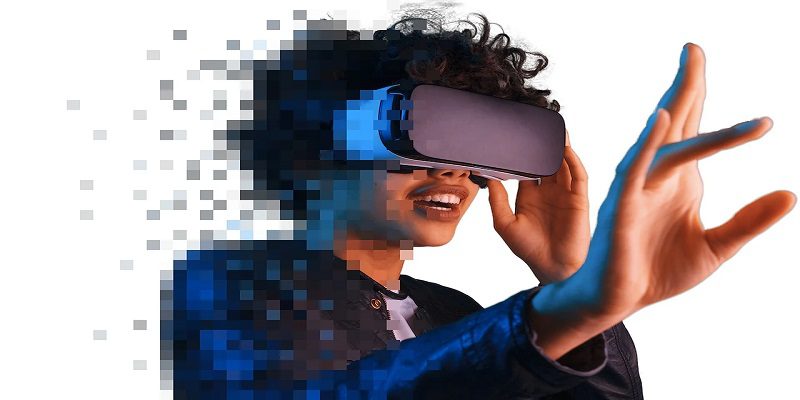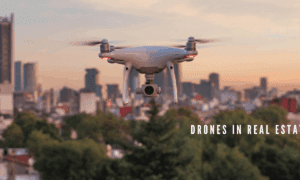Augmented reality has emerged as one of the most transformative and intriguing innovations of our time. Augmented reality, often abbreviated as AR, has the potential to change the way we interact with the world around us. This blog post will serve as your comprehensive guide to augmented reality, shedding light on its definition, history, applications, and future prospects. By the end of this article, you’ll have a deeper understanding of AR and the exciting possibilities it holds.
Definition of Augmented Reality
Augmented reality is a technology that overlays digital information, such as images, videos, 3D models, or other data, onto the real-world environment. Unlike virtual reality, which immerses users in a completely digital world, AR enhances the real world by adding computer-generated elements. These elements can be perceived through devices like smartphones, tablets, smart glasses, and headsets.
The Difference Between AR and Virtual Reality (VR)
AR and VR are often used interchangeably, but they are distinct technologies. Virtual reality creates a completely immersive digital environment, while AR blends digital content with the real world. The key difference lies in the level of immersion and the extent to which users are isolated from the real world. AR retains the connection to reality, while VR offers complete escapism.
A Brief History of Augmented Reality
The concept of augmented reality dates back to the 1960s. Ivan Sutherland’s “Sword of Damocles” is often considered the first head-mounted AR display. However, early augmented reality devices were limited by their size, weight, and computing power. It was not until the late 20th and early 21st centuries that AR technology began to advance significantly.
Key Milestones in AR Development
- ARToolKit (1999): Developed by Hirokazu Kato, ARToolKit was one of the first open-source libraries for AR applications.
- Google Glass (2013): Google’s smart glasses gained attention for their potential in everyday life, but privacy concerns and a high price tag led to their discontinuation.
- Pokemon Go (2016): This mobile game demonstrated the mass appeal of AR, as millions of players hunted for virtual creatures in the real world.
- Microsoft HoloLens (2016): The HoloLens was one of the first mixed-reality headsets, blending VR and AR, and has been adopted in various industries.
How Augmented Reality Works
Hardware and Software Components
AR systems require specific hardware and software components to function effectively. Hardware includes cameras, sensors, and displays, while software involves computer vision algorithms, tracking systems, and content creation tools.
AR Tracking and Overlays
AR systems use tracking technology to understand the real-world environment and the user’s position within it. Overlays are digital objects or information that augmented reality systems superimpose onto the real world. This combination of tracking and overlays creates a seamless AR experience.
Applications of Augmented Reality
Augmented Reality in Entertainment
Entertainment has been a major driver of AR adoption. From interactive books and educational apps for children to location-based AR games like Pokemon Go, entertainment is the gateway through which many people first experience augmented reality.
AR in Healthcare and Medicine
In healthcare, AR is used for medical training, surgery planning, and patient education. Surgeons can visualize patient data in real time during surgery, improving precision and safety.
AR in Education
AR has the potential to revolutionize education by making learning more interactive and engaging. Students can explore historical events through AR apps, conduct virtual science experiments, and more.
Augmented Reality in Manufacturing and Industrial Settings
Manufacturers employ augmented reality to enhance efficiency and accuracy. Technicians can access digital manuals and real-time data overlays to streamline maintenance and repair processes.
AR in Retail and E-commerce
Retailers are using AR to provide customers with immersive shopping experiences. Try-before-you-buy virtual fitting rooms andAR product visualization are becoming more common.
AR in Navigation and Wayfinding
AR-based navigation apps offer real-time directions and information overlays to help users navigate cities, museums, and public spaces.
Challenges and Concerns
Privacy and Security
As AR becomes more integrated into our lives, privacy concerns arise. The collection of user data and the potential for surveillance have led to calls for robust privacy protections.
User Experience
AR interfaces must be intuitive and user-friendly to gain widespread acceptance. Overly complex or confusing experiences may deter users.
Technical Limitations
AR technology is still evolving, and challenges such as battery life, device weight, and visual discomfort need to be addressed for AR to reach its full potential.
The Future of Augmented Reality
Upcoming AR Innovations
The future of AR is promising. Innovations like AR contact lenses, thinner and more stylish smart glasses, and improved tracking technology are on the horizon.
AR Trends and Market Growth
The augmented reality market is expected to grow rapidly, with applications expanding across various industries. AR is set to play a significant role in the Fourth Industrial Revolution and the advancement of smart cities.
Conclusion
Augmented reality AR has transcended the realm of science fiction to become an integral part of our lives. Its applications span entertainment, education, healthcare, manufacturing, retail, and beyond. While challenges and concerns persist, AR’s future is bright, with exciting innovations on the horizon. As the technology continues to demystify the boundaries between the real and the digital, it’s a thrilling time to be part of the AR revolution. Augmented reality is not just the future; it’s the present, and it’s here to stay.



































